Fractal Curves from Prime Trigonometric Series
Abstract
:1. Introduction
2. Convergence and Differentiability
- The faster the coefficients decrease for , the smaller is the influence of the higher frequencies. This implies that the series converges better and the resulting function is smoother.
- The faster the frequencies increase or, equivalently, the greater the gaps, the smaller the period of the oscillation becomes, so that one obtains more peaks and sinks in one interval, which increases the fractal character.
2.1. Historical Remarks
2.2. Preliminary Definitions
2.3. Differentiability of
- Then, the series converges uniformly and absolutely to a continuous function .
- For , if further , then the function is , i.e., m-times continuously differentiable.
2.4. Self-Similarity and Fractal Dimension
Fractal Dimension of
3. Random Properties for
3.1. Lacunary Sequences Behaving as Independent Random Variables: Short Overview
3.2. The Central Limit Theorem
4. Concluding Remarks
Acknowledgments
Author Contributions
Conflicts of Interest
References
- Cramér, H. On the order of magnitude of the difference between consecutive prime numbers. Acta Arith. 1936, 2, 23–46. [Google Scholar] [CrossRef]
- Vartziotis, D.; Wipper, J. The fractal nature of an approximate prime counting function. Fractal Fract. 2017, 1, 10. [Google Scholar] [CrossRef]
- Raseta, M. On the strong approximations of partial sums of f(nkx). arXiv, 2015; arXiv:1509.08138. [Google Scholar]
- Philipp, W.; Stout, W.F. Almost Sure Invariance Principles for Partial Sums of Weakly Dependent Random Variables; American Mathematical Society: Providence, RI, USA, 1975. [Google Scholar]
- Hardy, G.H. Weierstrass’s Non-Differentiable Function. Trans. Am. Math. Soc. 1916, 17, 301–325. [Google Scholar]
- Jaffard, S. Pointwise and directional regularity of nonharmonic Fourier series. Appl. Comput. Harmon. Anal. 2010, 22, 251–266. [Google Scholar] [CrossRef]
- Hardy, G.H.; Littlewood, J.E. Contributions to the arithmetic theory of series. Proc. Lond. Math. Soc. 1913, 2, 411–478. [Google Scholar] [CrossRef]
- Gerver, J. The differentiability of the Riemann function at certain rational multiples of π. Am. J. Math. 1970, 92, 33–55. [Google Scholar] [CrossRef]
- Gerver, J. More on the differentiability of the Riemann function. Am. J. Math. 1970, 93, 33–41. [Google Scholar] [CrossRef]
- Chamizo, F.; Córdoba, A. Differentiability and dimension of some fractal Fourier series. Adv. Math. 1996, 142, 335–354. [Google Scholar] [CrossRef]
- Landau, E.; Walfisz, A. Über die nichfortsetzbarkeit einiger durch dirichletsche reihen definierter funktionen. Rendiconti del Circolo Matematico di Palermo 1920, 44, 82–86. (In German) [Google Scholar] [CrossRef]
- Fröberg, C.E. On the prime zeta function. BIT 1968, 8, 187–202. [Google Scholar] [CrossRef]
- Rosser, J.; Schoenfeld, L. Approximate formulas for some functions of prime numbers. Ill. J. Math. 1962, 6, 64–94. [Google Scholar]
- Cohen, H. High Precision Computation of Hardy-Littlewood Constants. 2000. Available online: https://www.math.u-bordeaux.fr/~hecohen/ (accessed on 1 January 2018).
- Cattani, C. Fractal patterns in prime numbers distribution. In Lecture Notes in Computer Science, Proceedings of the International Conference on Computational Science and Its Applications (ICCSA 2010), Fukuoka, Japan, 23–26 March 2010; Taniar, D., Gervasi, O., Murgante, B., Pardede, E., Apduhan, B.O., Eds.; Springer: Berlin/Heidelberg, Germany, 2010; Part II, pp. 164–176. [Google Scholar]
- Cattani, C.; Ciancio, A. On the fractal distribution of primes and prime-indexed primes by the binary image analysis. Phys. A Stat. Mech. Its Appl. 2016, 460, 222–229. [Google Scholar] [CrossRef]
- Kahane, J.P. A century of interplay between taylor series, Fourier series and brownian motion. Bull. Lond. Math. Soc. 1997, 29, 257–279. [Google Scholar] [CrossRef]
- Salem, R.; Zygmund, A. On lacunary trigonometric series. Proc. Natl. Acad. Sci. USA 1947, 33, 333–338. [Google Scholar] [CrossRef] [PubMed]
- Salem, R.; Zygmund, A. On lacunary trigonometric series, II. Proc. Natl. Acad. Sci. USA 1948, 34, 54–62. [Google Scholar] [CrossRef] [PubMed]
- Erdös, P.; Gál, I. On the law of iterated logarithm I + II. Indag. Math. (Proceedings) 1955, 58, 65–84. [Google Scholar] [CrossRef]
- Weiss, M. The law of the iterated logarithm for lacunary trigonometric series. Trans. Am. Math. Soc. 1959, 91, 444–469. [Google Scholar]
- Erdös, P. On trigonometric sums with gaps. Magyar Tud. Akad. Mat. Kutató Int. Közl 1962, 7, 37–42. [Google Scholar]
- Gaposhkin, V.F. Lacunary series and independent functions. Uspekhi Matematicheskikh Nauk 1966, 21, 3–82. [Google Scholar] [CrossRef]
- Berkes, I.; Philipp, W.; Tichy, R. Metric discrepancy results for sequences {nkx} and diophantine equations. In Diophantine Approximation: Festschrift for Wolfgang Schmidt; Springer: Vienna, Austria, 2008; pp. 95–105. [Google Scholar]
- Goldston, D.A.; Pintz, J.; Yildirim, C.Y. Primes in tuples I. Ann. Math. 2009, 170, 819–862. [Google Scholar] [CrossRef]
- Schatte, P. On a law of iterated logarithm for sums mod 1 with applications to Benford’s law. Probab. Theory Relat. Fields 1988, 77, 167–178. [Google Scholar] [CrossRef]
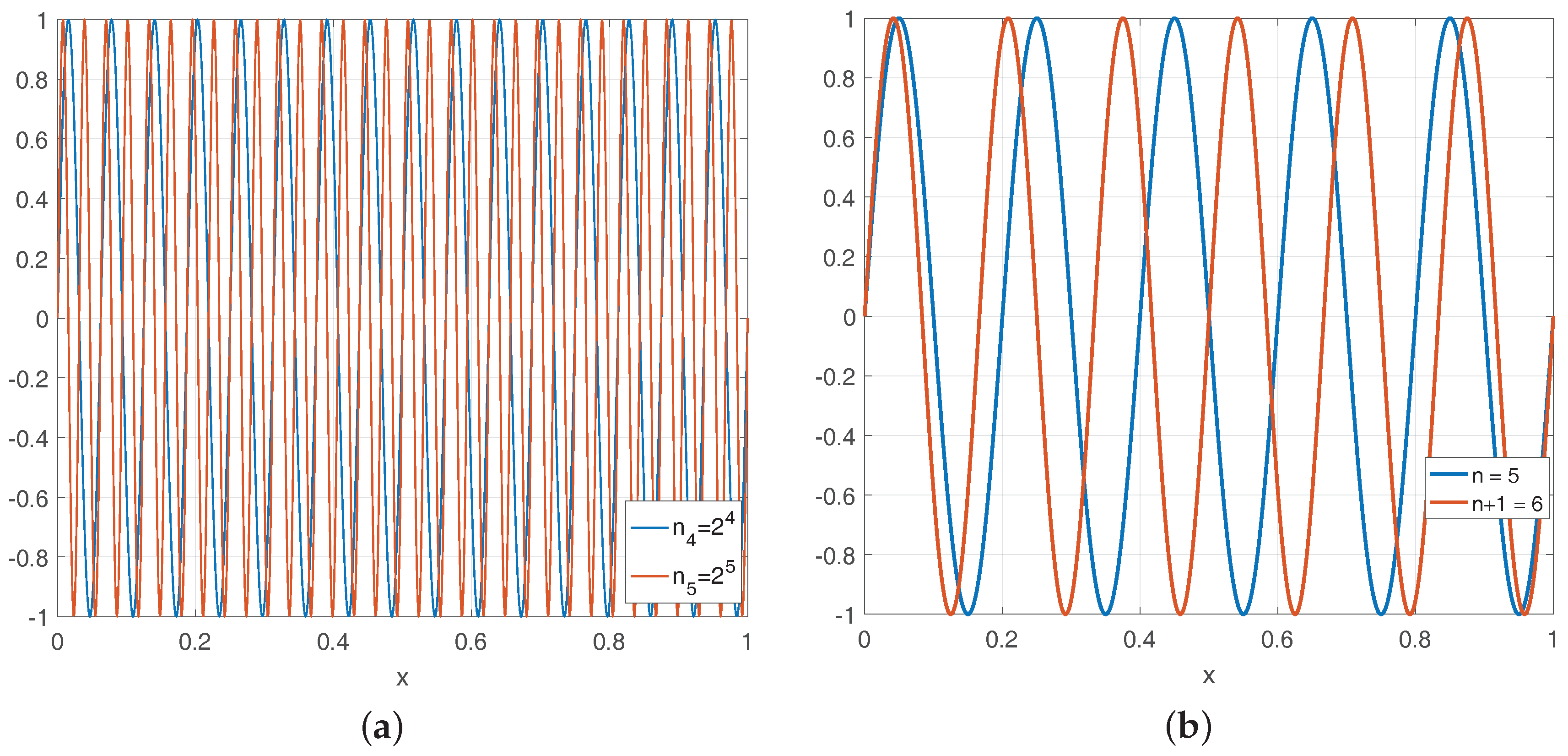
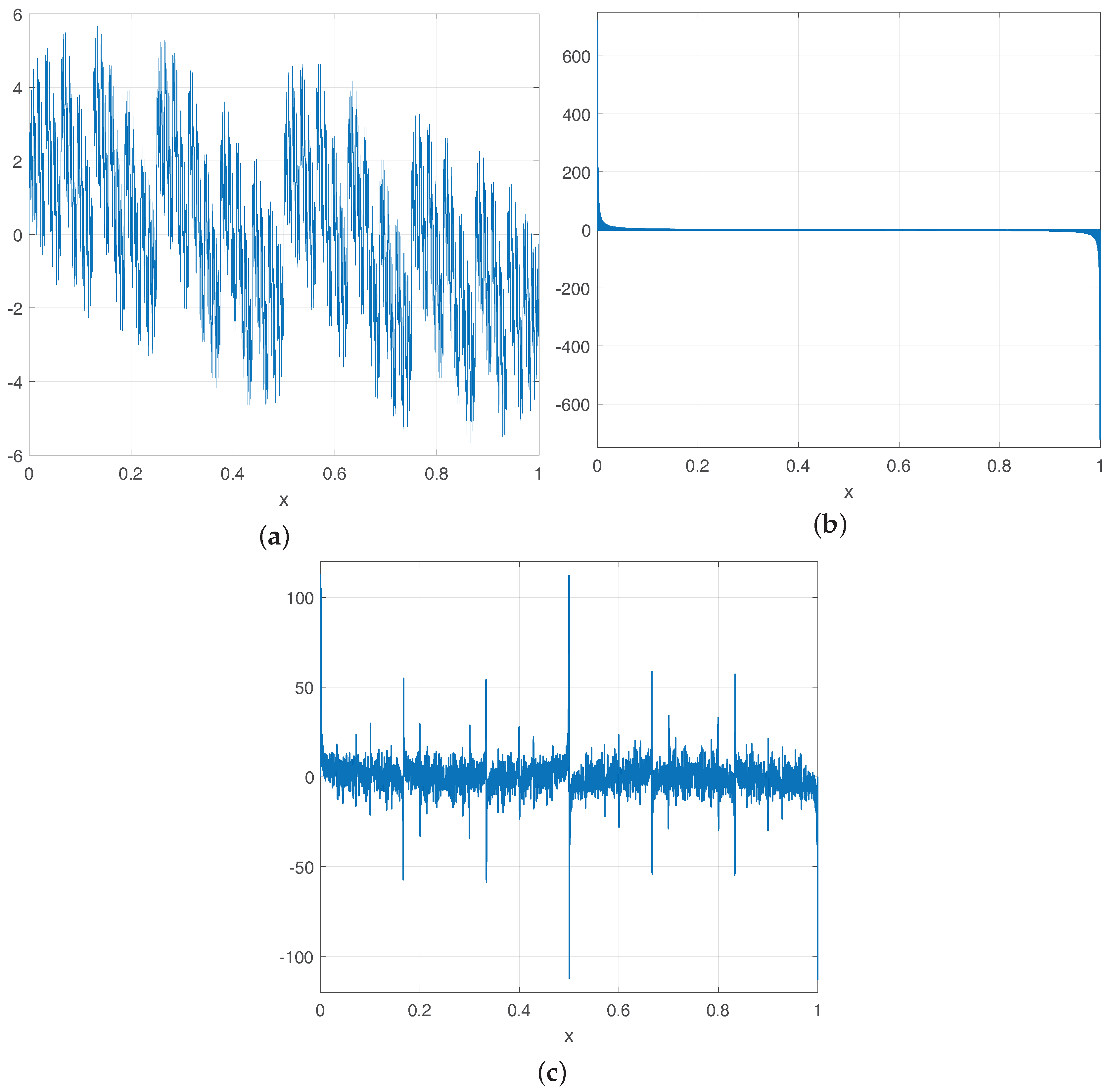
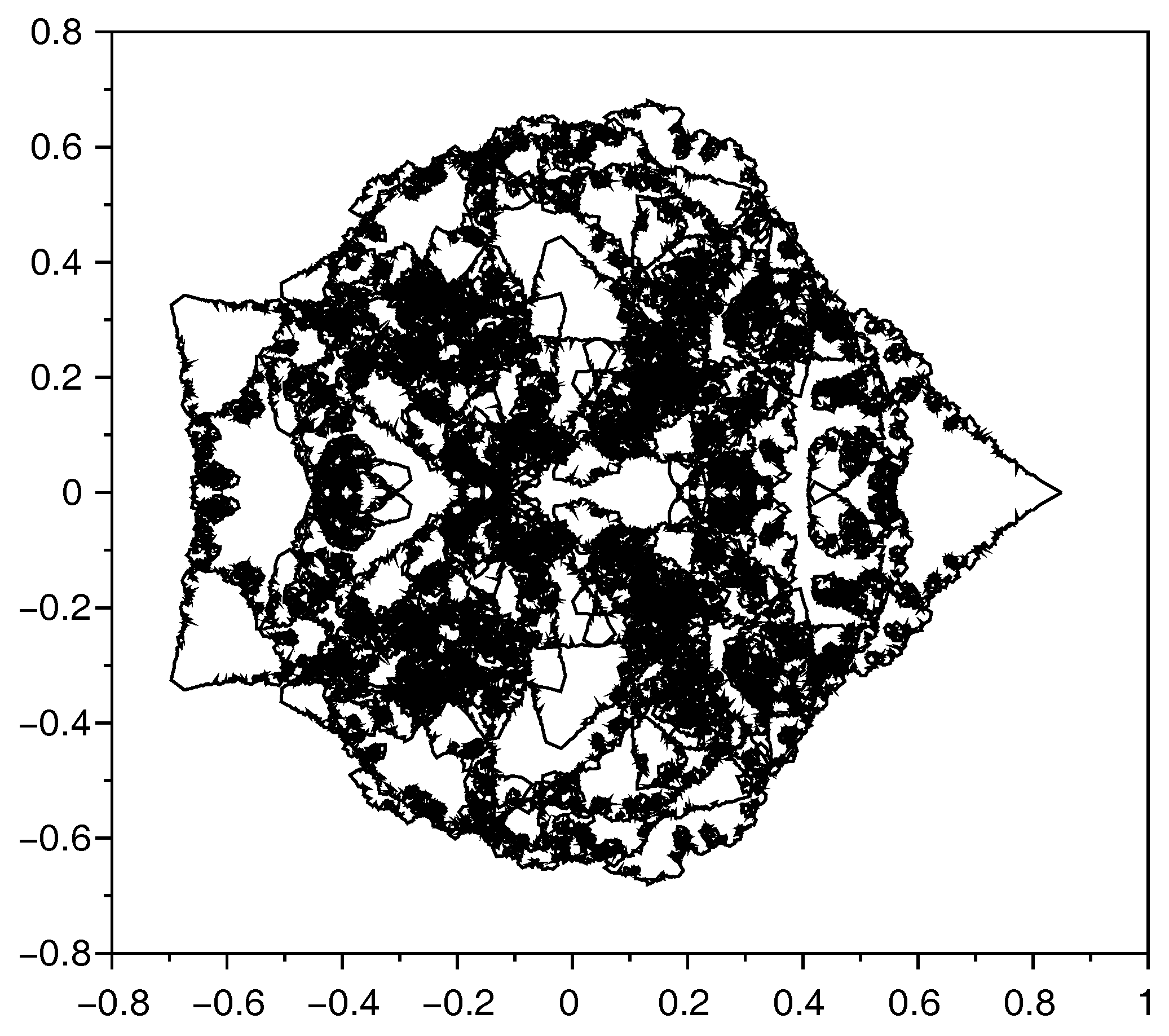
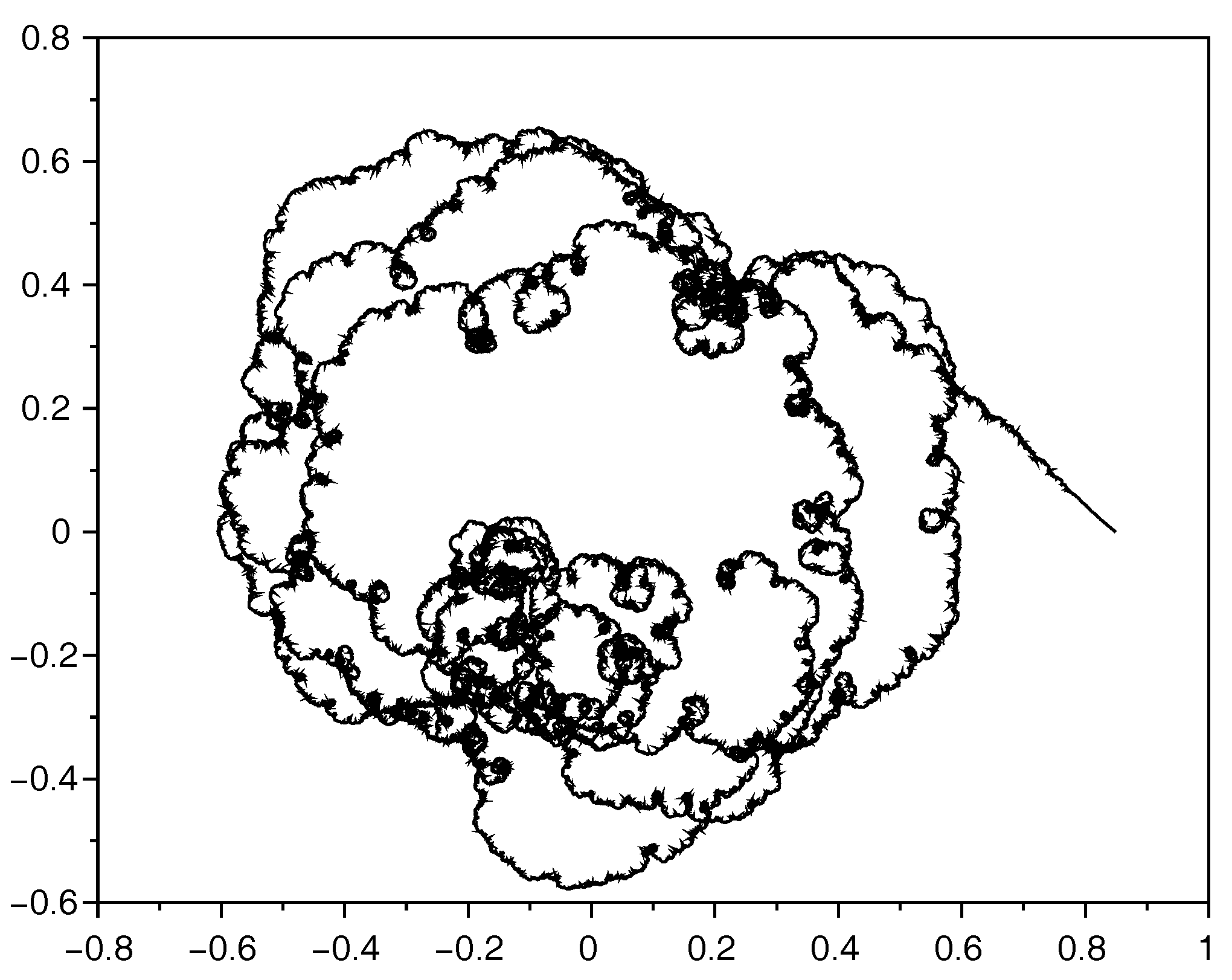
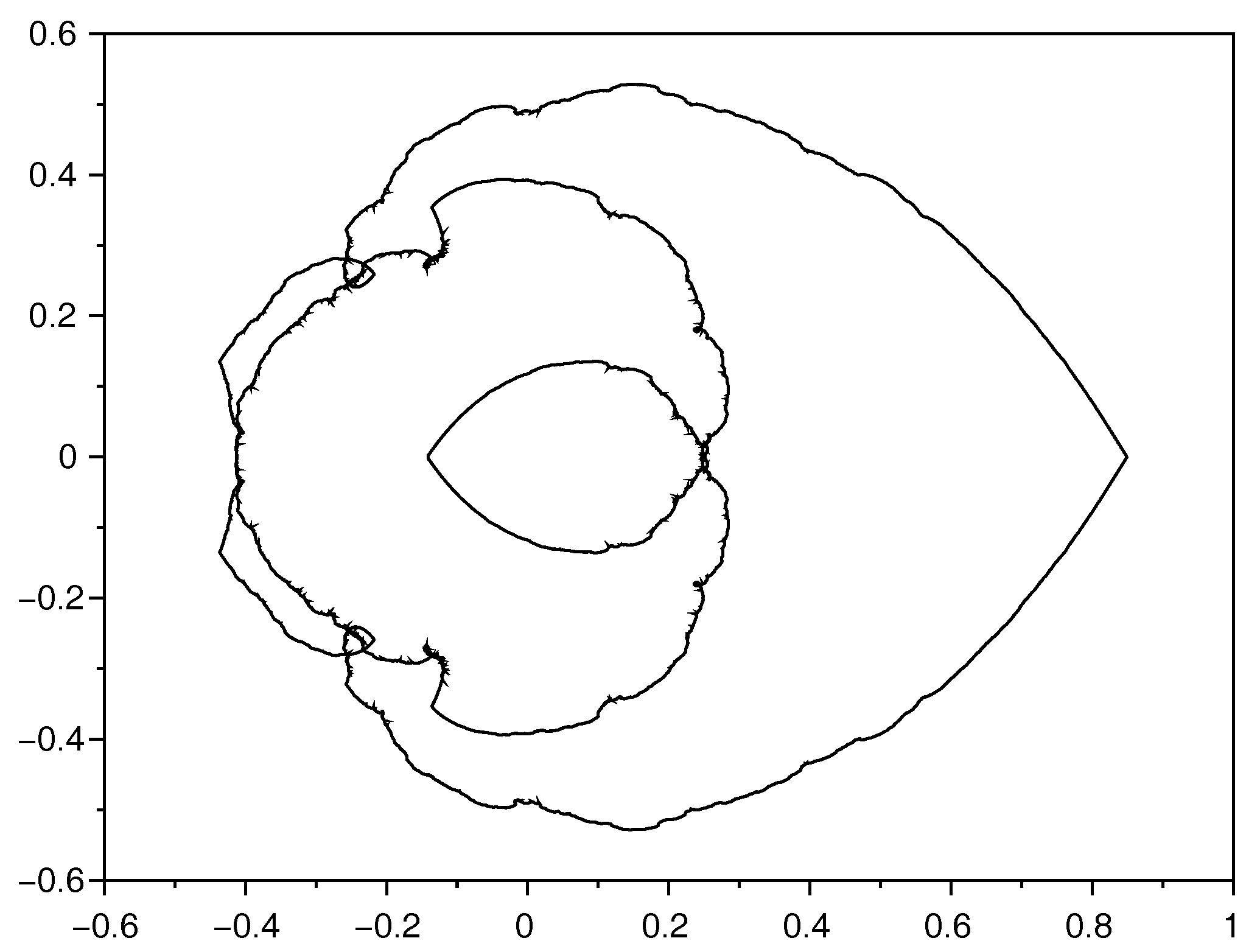
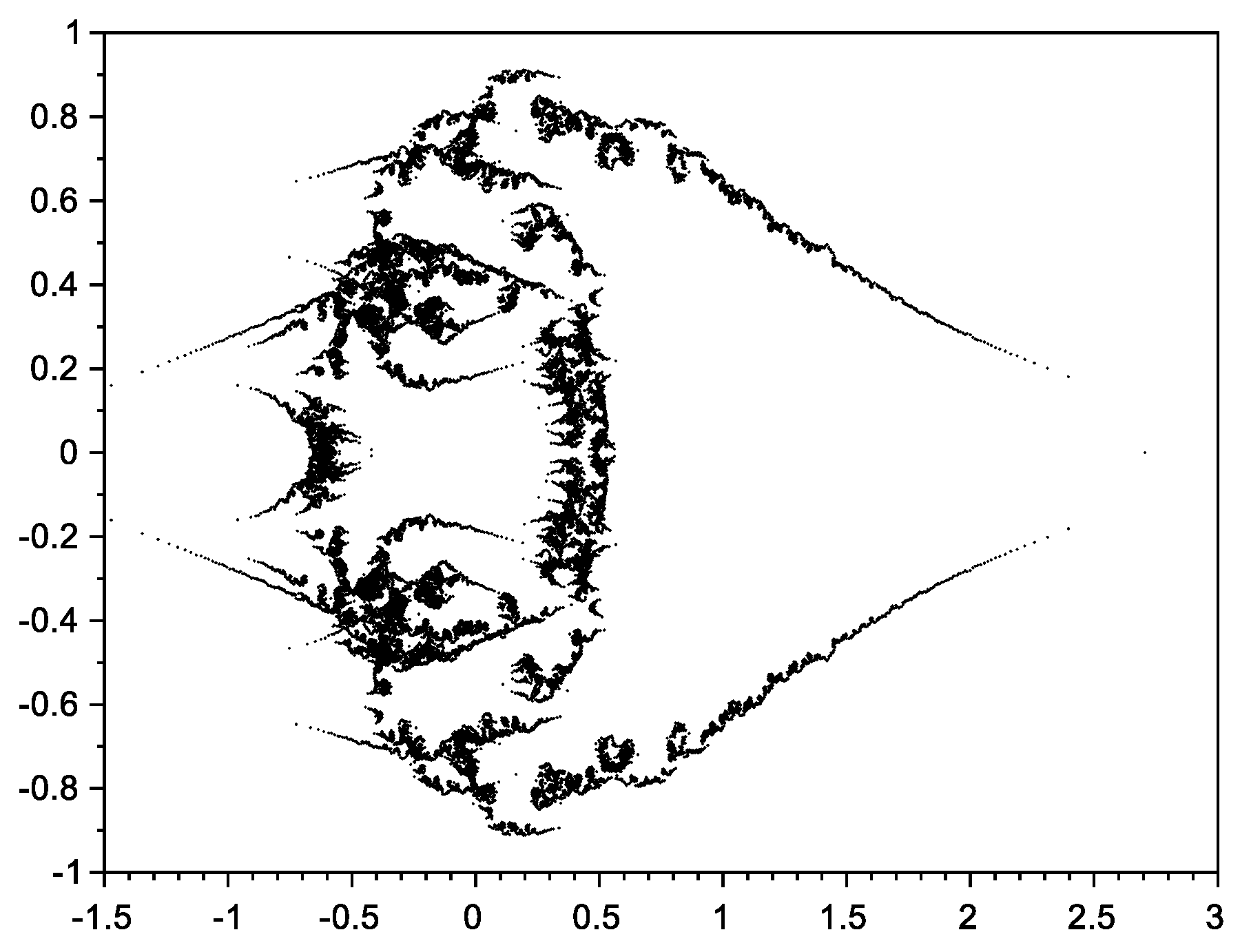
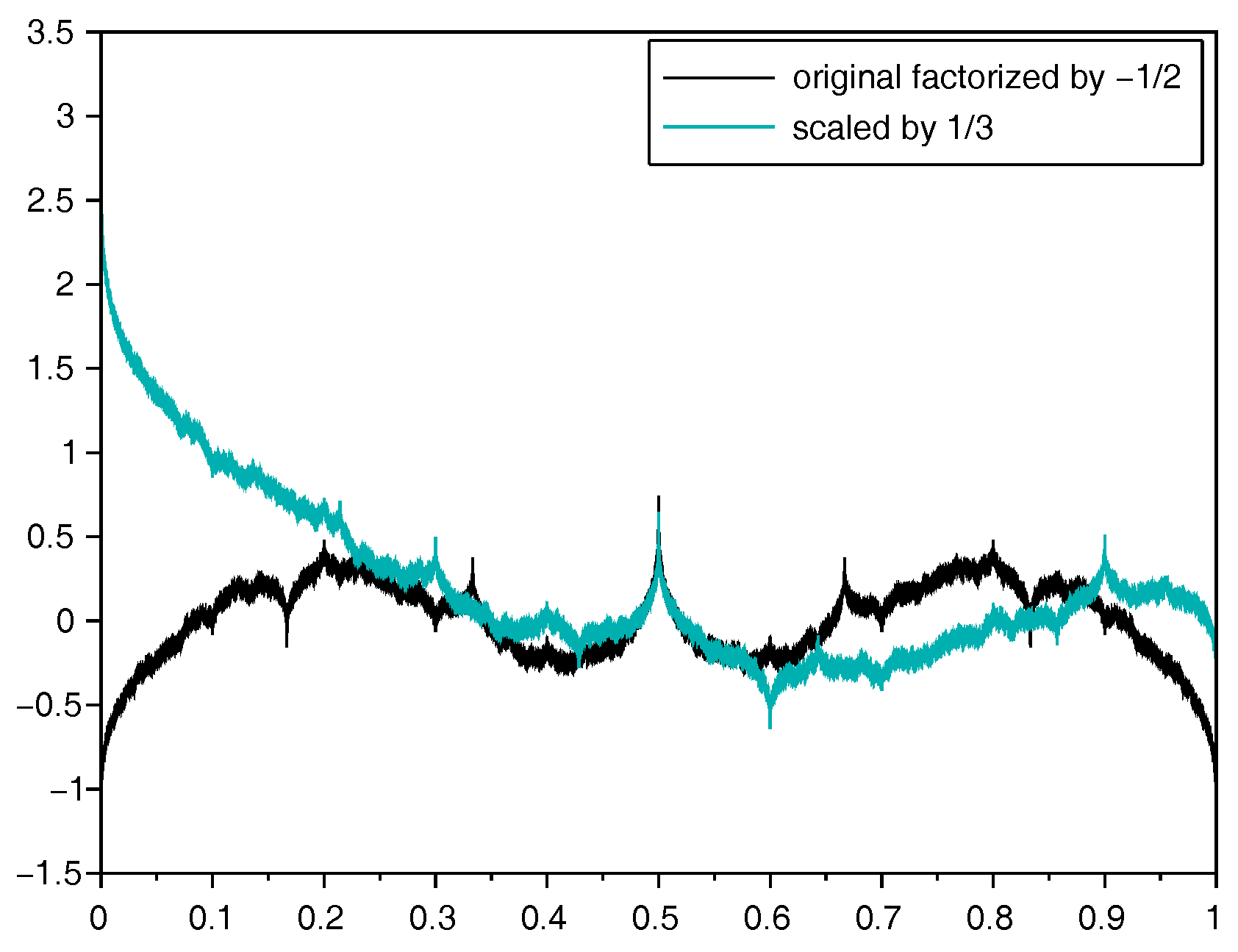
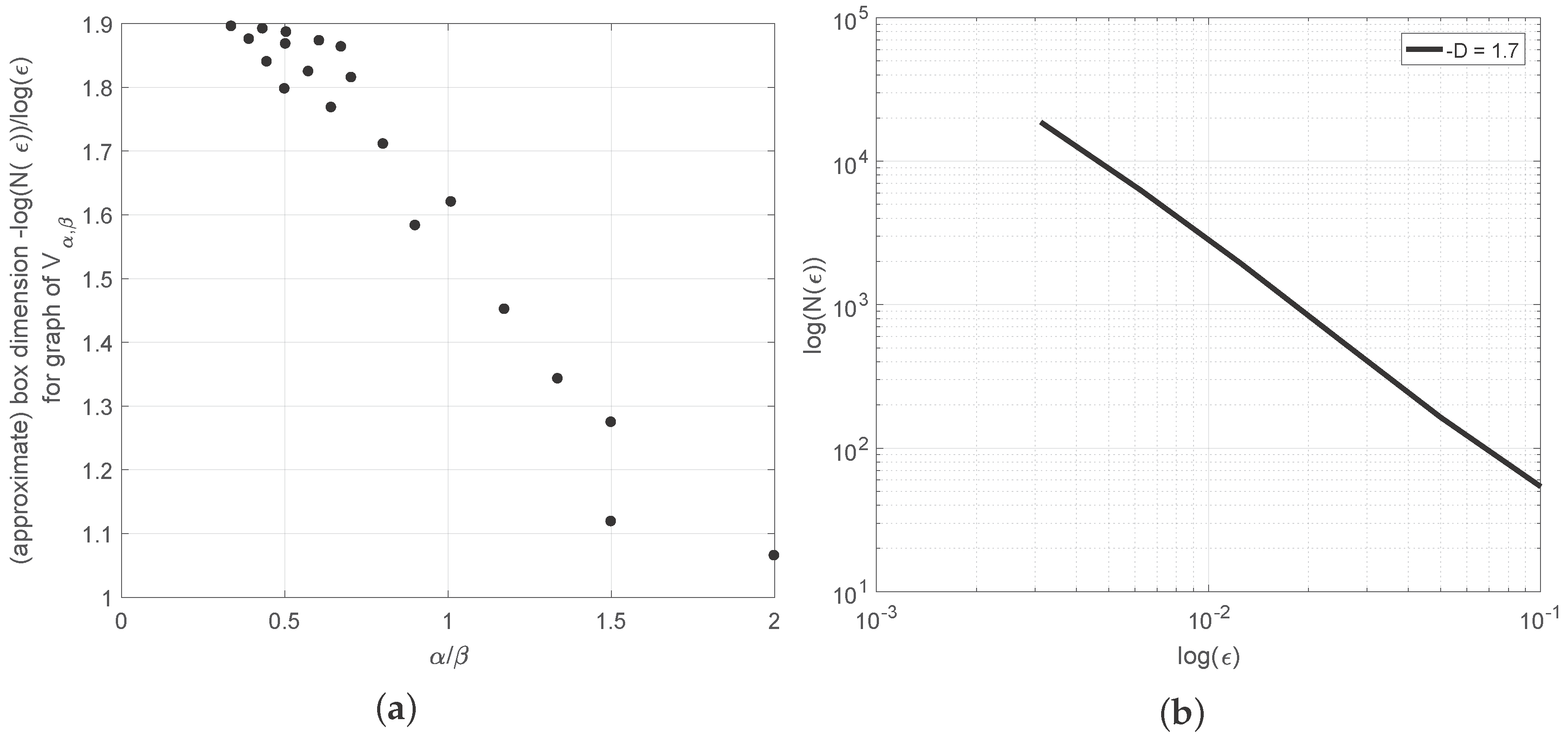
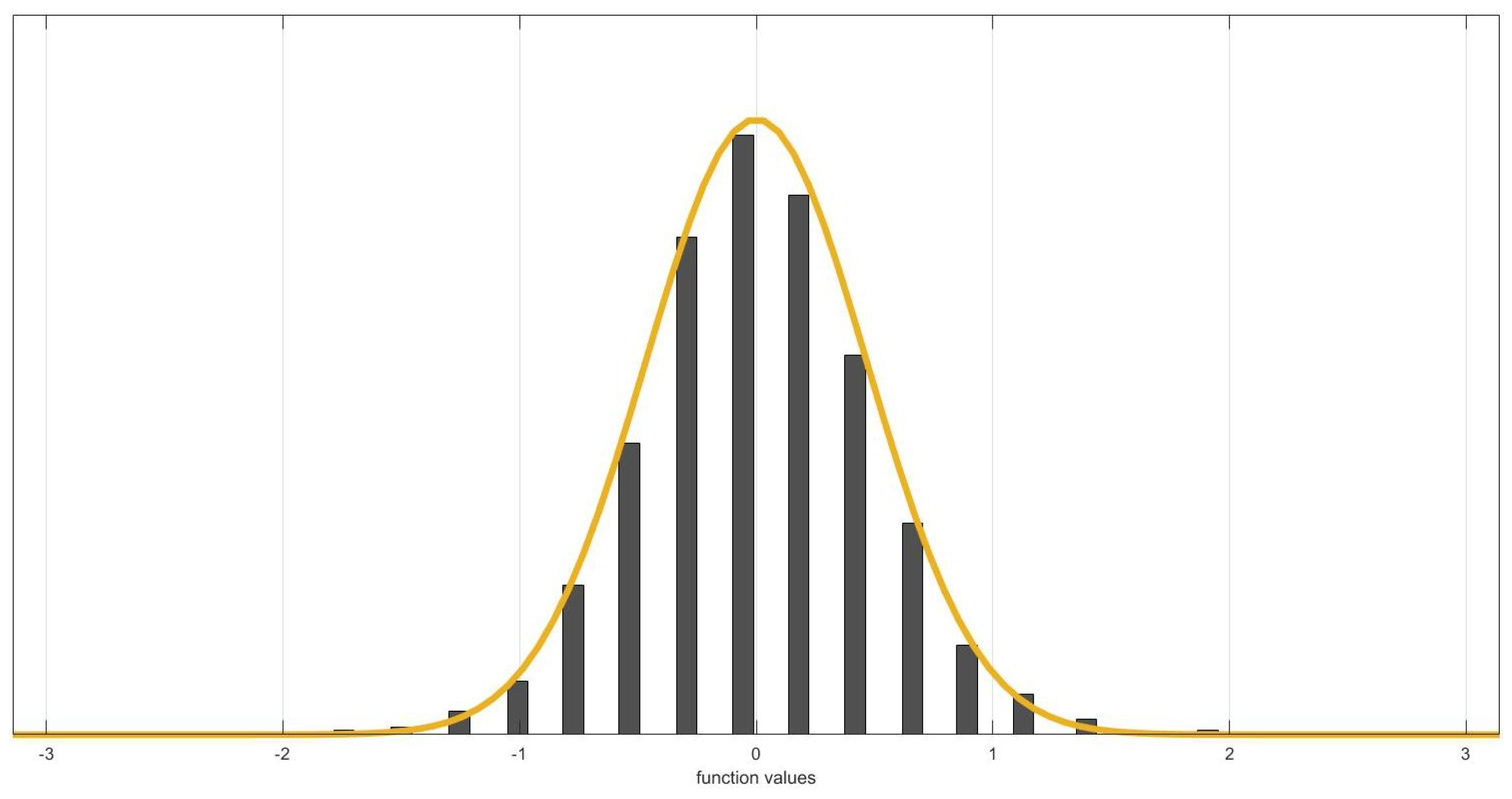
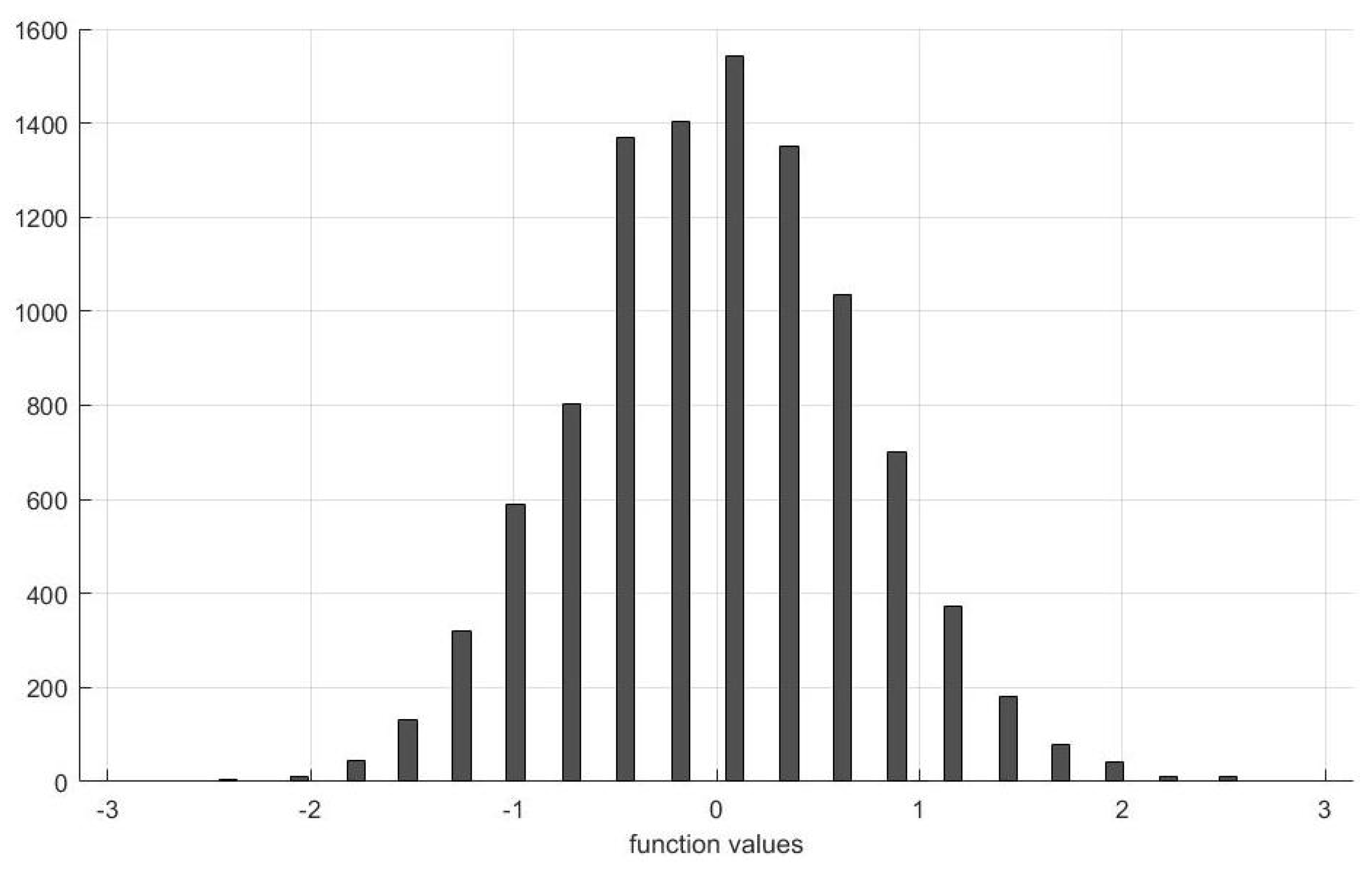
© 2018 by the authors. Licensee MDPI, Basel, Switzerland. This article is an open access article distributed under the terms and conditions of the Creative Commons Attribution (CC BY) license (http://creativecommons.org/licenses/by/4.0/).
Share and Cite
Vartziotis, D.; Bohnet, D. Fractal Curves from Prime Trigonometric Series. Fractal Fract. 2018, 2, 2. https://doi.org/10.3390/fractalfract2010002
Vartziotis D, Bohnet D. Fractal Curves from Prime Trigonometric Series. Fractal and Fractional. 2018; 2(1):2. https://doi.org/10.3390/fractalfract2010002
Chicago/Turabian StyleVartziotis, Dimitris, and Doris Bohnet. 2018. "Fractal Curves from Prime Trigonometric Series" Fractal and Fractional 2, no. 1: 2. https://doi.org/10.3390/fractalfract2010002
APA StyleVartziotis, D., & Bohnet, D. (2018). Fractal Curves from Prime Trigonometric Series. Fractal and Fractional, 2(1), 2. https://doi.org/10.3390/fractalfract2010002




